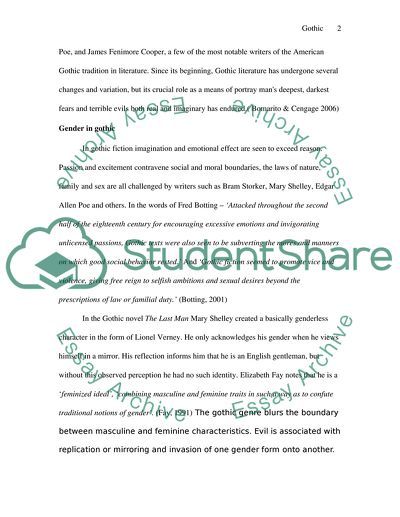Cite this document
(Gender in Gothic Fiction Essay Example | Topics and Well Written Essays - 4500 words, n.d.)
Gender in Gothic Fiction Essay Example | Topics and Well Written Essays - 4500 words. Retrieved from https://studentshare.org/literature/1721822-gender-in-gothic-fiction
Gender in Gothic Fiction Essay Example | Topics and Well Written Essays - 4500 words. Retrieved from https://studentshare.org/literature/1721822-gender-in-gothic-fiction
(Gender in Gothic Fiction Essay Example | Topics and Well Written Essays - 4500 Words)
Gender in Gothic Fiction Essay Example | Topics and Well Written Essays - 4500 Words. https://studentshare.org/literature/1721822-gender-in-gothic-fiction.
Gender in Gothic Fiction Essay Example | Topics and Well Written Essays - 4500 Words. https://studentshare.org/literature/1721822-gender-in-gothic-fiction.
“Gender in Gothic Fiction Essay Example | Topics and Well Written Essays - 4500 Words”, n.d. https://studentshare.org/literature/1721822-gender-in-gothic-fiction.


